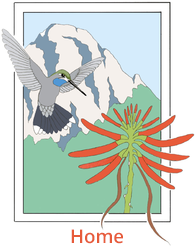Conservation
Conservation through Education is the mission of the Friends of Madera Canyon, incorporating a variety of programs and activities that promote concern and action toward conservation and preservation.
Restoration at Madera Canyon
Restoration at Madera Canyon, a 9-minute video produced by Richard and Christine Olsenius for Friends of Madera Canyon (FoMC), documents the completion of the largest restoration project ever undertaken in Madera Canyon by the Forest Service and FoMC.
Conservation, Preservation & Research
Monitoring canyon ecology, on-going conservation work and supporting research projects/surveys are essential components of the Friends of Madera Canyon Mission. These efforts generate more complete knowledge about Madera Canyon and help us to understand and protect all of its diverse, interconnected elements- geology, weather/climate, life zones, habitats, plants, animals and previous human inhabitants.

Venomous Reptiles
The Gila Monster is a venomous lizard that rarely bites humans unless handled.
READ MORE VENOMOUS REPTILES
An encounter with a rattlesnake is a potentially dangerous situation; your knowledge about reptiles and how to avoid rattlesnakes could be invaluable. If you live on the outer edges of town or in the desert, the chances of encountering a snake are high. Most reptiles are harmless. Of the venomous reptiles of our region, only the rattlesnake is truly a safety concern around your home. The Sonoran Coral snake is a small, shy snake usually less than 17 inches in length and not much bigger around than a pencil, – much smaller than the dangerous Coral snakes of the southeastern US and tropical Mexico. Though venomous, the Sonoran Coral snake has a very small head and mouth and is only prone to bite when handled. Most other snakes and lizards are also likely to bite in defense if handled but are considered nonvenomous and therefore harmless to humans. Wild animals should never be handled; it puts the handler at risk and is extremely stressful to the animal.
This informative article with crucial information and excellent photos Living with Venomous Reptiles (PDF) is provided by The Tucson Herpetological Society.
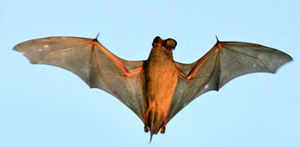
Bats
Despite extensive public education, misconceptions about bats persist and bats remain targets of human suspicion, superstition, and fear.
READ MORE BATS
Friends of Madera Canyon has initiated the Bat House Project to promote bat awareness and conservation, provide additional bat roosting space and to raise public understanding of the vital role bats play in southern Arizona’s ecosystems.
Bats are the only mammals capable of true flight. Nocturnal, they sleep during the day in protected places and emerge at night to hunt for food. Though most bats have excellent vision and a well-developed sense of smell, they rely primarily on sonar or “echo-location” to find food and avoid flying into objects. Nearly 1000 bat species worldwide, there are 35 species in the USA, and seventeen species identified in Madera Canyon and Santa Rita Mountains, including the only Arizona record of Ghost-faced Bat. Some live in the canyon year-round, others are “snowbirds,” residing here part time and migrating away seasonally.
Southern Arizona bats utilize different habitats. California Leaf-nosed Bats live in the desert, Silver-haired Bat are only found high up in Sky Island mountain forests. Big Brown Bats are habitat generalists and utilize a variety of habitats. Mexican Free-tailed Bat and Pallid Bat are the most common species in the southwest. Bat sizes vary, Mexican Free-tailed Bats have a 12″ wingspan and weigh as much as 4 pennies (4/10 oz.). The smallest bat in Arizona, the Western Pipistrelle, has an 8″ wingspan and weighs 1/10 oz. (1 penny!).
The majority of our local bat species feed solely on insects and an individual is can catch more than 500 insects per hour! Mexican Free-tailed Bats from three caves near San Antonio, TX, consume up to a million pounds of insects a night! Such statistics illustrate the importance of bats in controlling insect pests, such as mosquitoes. Two migrating local species, the Long-nosed Bat and Long-tongued Bat, are pollinators that feed on nectar and pollen of saguaro, ocotillo, and agave blossoms – and famous for draining hummingbird feeders at night. Pallid Bats often hunt on the ground, crawling and hopping about on the elbows of their folded wings to catch spiders, scorpions, and centipedes!
Over several decades, bat populations have declined in the U.S. due to pesticide use, habitat loss and unjustified persecution. Our bat houses at 5 sites in the canyon, and at La Posada and Continental School. were built by Al Tozier, Bud Gode, Luis Calvo and U.S. Forest Service Ranger Don Marion.
Results? For a time, direct observations and accumulations of guano beneath indicated bats were using the two small, compact house designs, but not the larger, flat rectangular houses. Analysis of temperature data corroborated these observations. Data showed that large houses, with their direct, west-sun orientation, were often too hot for bats during spring and summer when they are most likely to be in Madera Canyon. This design, with a tendency to blow over in high winds, was replaced with smaller, cooler, improved ventilation models. A new adjustable mount allowed for precise sun orientation.
Remarkable animals, well-adapted to live in our Sky Island habitats are seen at evening picnics in Madera Canyon. Contact Doug Moore for more info at: info@friendsofmaderacanyon.org.
Challenges in the Canyon
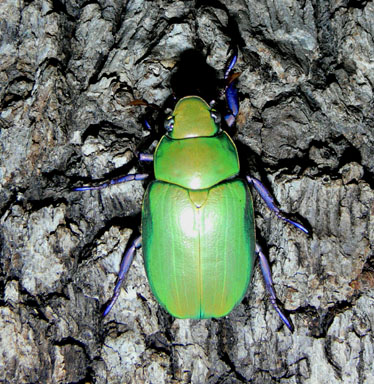
Collection of plants and wildlife
There is an initiative by the Friends to prohibit all collecting of wildlife and plant life in the Madera Canyon Recreation Area. Some wildlife (including many plants) are already legally protected, of course – those that are endangered or rare, and nearly all birds. Game animals are also protected in the MCRA, since no hunting is allowed there.
In contrast, however, collectors, both commercial and private, have considerable freedom to take numerous smaller mammals, reptiles, amphibians, and insects, as well as many plants. And it is more than likely that some rare and endangered plants are also taken by less experienced or discriminating collectors. In an area as fragile as the Canyon, essentially open collecting cannot help but have a deleterious effect on the ecosystems involved. This is especially the case in a drought season like the present.
Erosion
Climate Change
How do we know the climate is changing?
Using historical and natural records, scientists have been able to measure the Earth’s past climate. People have measured the Earth’s temperature and amount of rainfall since the mid-1800s, providing a snapshot of the climate for the last 150 years. For climate measurements prior to this, researchers must obtain measurements from indirect sources, including core samples from ice, sediment, and trees.Learn more about how we know the climate is changing
US Forest Service United States Department of Agriculture (USDA)
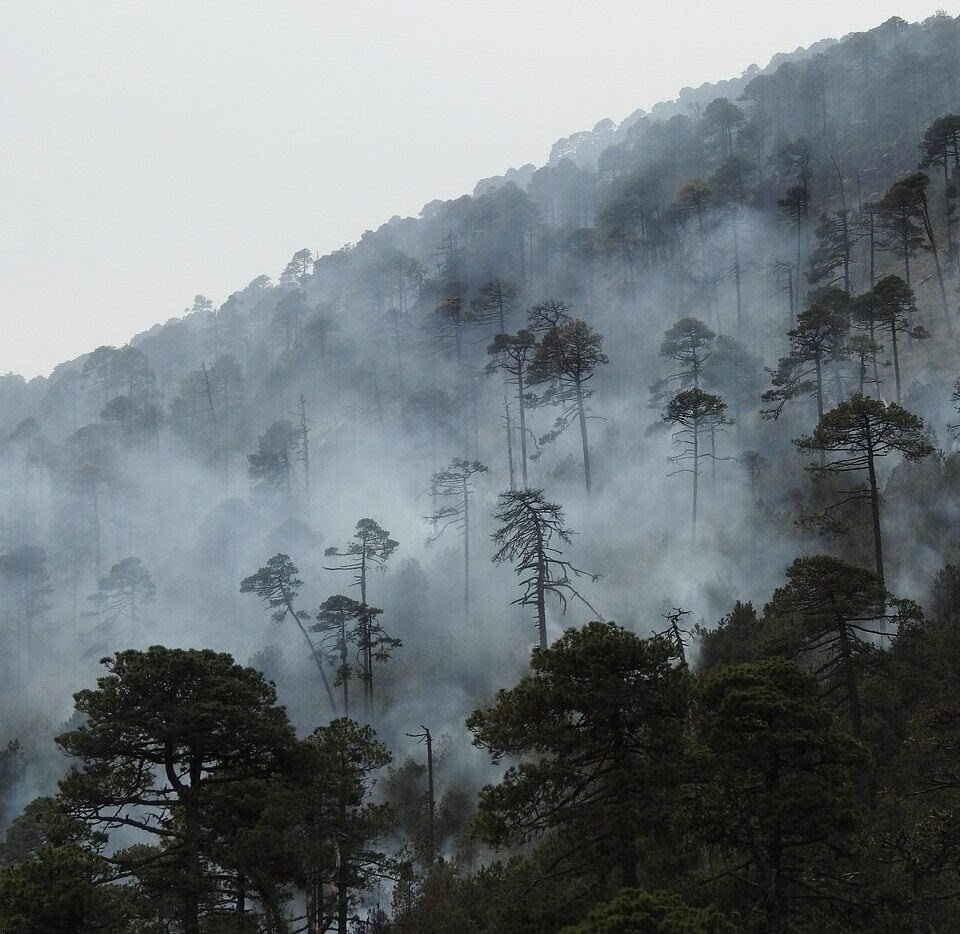
Hiking tips for preserving the canyon
READ MORE
- Clean Off Your Boots As you hike through different areas, your boots pick up soil that may contain seeds, bacteria, and sometimes even small arthropods. When you go from one location to another without cleaning off your boots, you’re potentially depositing debris into a new area which could prove to be harmful. Invasive plant and insect species can spread to new areas and replace native species. Tree fungi can damage or kill trees. Chytrid fungus is spreading globally and is deadly to amphibians. Not cleaning your boots can set off a chain reaction of potential damage for the natural world. So between hikes, wipe down your boots and make sure they’re clean before you start a hike in a different place.
- Bring a Reusable Water Bottle Single use plastics are overwhelming the earth. Yet,some hikers still bring single use bottles of water or sports drink when they hike; many end up littering our trails or clogging public trash cans. Invest in a high quality metal or BPA-free reusable water bottle that you can carry hiking. A water pack is also a good alternative. These containers will hold more water than a single use bottle and are much better for the natural world. Also, pack your trail snacks in reusable containers when possible.
- Stick to the Trail Every hiker should carry a paper copy of the trail map with them and stay on the designated trail no matter what. When you go walking off the trail you can trample and kill plants, break branches off shrubs and young trees, and contribute to damaging soil erosion around the trail. Don’t take shortcuts or try to create your own trail- this creates “social trails” which can seriously damage habitat. Stay on the designated trail when you’re hiking, even where it’s wet or muddy.
- Don’t Pursue/Annoy the Animals It’s wonderful to see deer, birds, and other animals when you’re out hiking, but please remember that you’re a guest in their homes! Don’t try to approach animals or lure them to you with food. Wild animals can be dangerous! Don’t leave food out for animals or try to take selfies with them. Do not pursue them off-trail. Enjoy their beauty from a distance and leave them alone. You can take photos of them from a distance to post on your social media, but do not approach closely. Use a telephoto or zoom camera lens to get that great wildlife photo from a safe distance for you and the animal.
- Take Your Trash with You It’s shocking how many people still litter when out hiking. If you have trash- like food wrappers or containers, pack it up carefully and take it out of the area with you. Then throw the trash away, or recycle it, in a proper receptacle later. Never throw your trash on the ground or leave it behind when you’re hiking.
Proctor Native Plant & Pollinator Landscape
The Proctor Native Plant and Pollinator Landscape was proposed by the USFS for habitat restoration and as nature education/interpretation that complimented the existing Bud Gode Interpretive Nature Trail Ramada. The installation of two picnic tables with ramadas in the center island of Proctor Parking Area cleared a large patch of surrounding mesquite trees and vegetation, making way for the planting of native flowering plants to attract and support local bees, butterflies and other pollinators, while providing an attractive natural landscape for canyon visitors to observe flowers and plant/pollinator interaction.
READ MORE
Now established and essentially self-sustaining, the nursery-grown plants initially required regular watering to survive. FoMC “super-volunteer” Dita Hagen visited and watered the entire landscape by hand weekly for over a year, with supplemental help from the FS and FoMC volunteers. FoMC volunteers also do seasonal “weeding mornings” to thin out returning native perennials and remove invasives like Desert Broom and Camphor Weed that threaten to take over the landscape.
Still some years from full size, landscape Desert Willow and White-thorn Acacia trees are already mature enough to flower. Wolfberry, Buckwheat, Tecoma, Hibiscus and other shrubs are also blooming in season, though it will take a while for the Ocotillos to grow tall enough to bloom. Penstemon, Cassia, Silverleaf Nightshade and other perennials are regularly reseeding. Native Fairy Duster, Velvet-pod Mimosa and Goldeneye are colonizing from the edges, as is a flowering milkweed vine. All the flowers are attracting pollinators! Already an excellent place to take camera, binocs and field guides to look at flowers and insects in spring, summer and fall, the Proctor Native Plant and Pollinator Landscape will continue to get better over time and provide enjoyment and nature discovery for years to come.
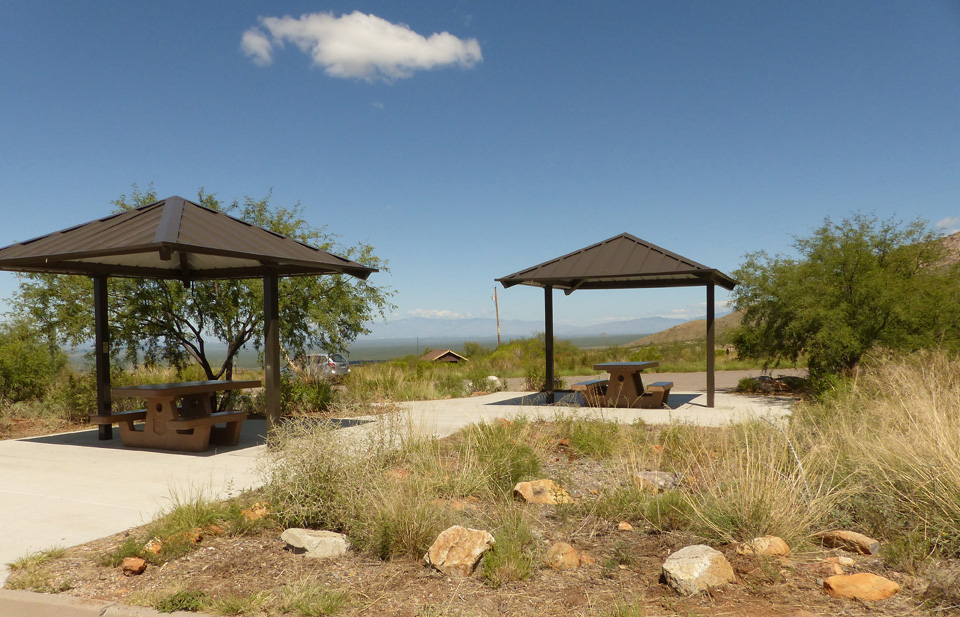
Capitol Improvement & Conservation Projects
Since the organization’s inception in 1987, the Friends of Madera Canyon has taken an active roll in assisting the USFS with construction, upgrade, repair & maintenance of canyon facilities and amenities, always with safety, protection and conservation in mind. Over 1 million dollars and thousands of volunteer hours have been donated to parking, restrooms, picnic facilities, trail heads/trails, bridges, natural history interpretive exhibits, habitat preservation/rehabilitation and nature education. The following is a list of recent projects
- Madera Parking & Picnic Area (West) Eagle Scout BGINT exhibit landscape & re-vegetation project
- Madera Canyon Road Bridges Project landscape & re-vegetation project
- Friends of Madera Canyon Honor Wall/retaining wall construction
- Proctor Native Plant and Pollinator Landscape (Proctor Parking Area) re-vegetation project
- Proctor (ADA) Accessible Trail and Madera Creek viewing area
- Amphitheater bench seat replacement
- Aligned 300-feet of Old Baldy Trail and restored six CCC-era culverts to move water properly off the trail and into a nearby stream.
- Restored 634-feet of eroded slope between Old Baldy and Super Trailheads by building mini-rock terraces and planting 270 native pollinator plants, grasses and shrubs to stabilize hillside
- Installed Restoration Partners sign
- Installed Indigenous people’s sign
- Installed pollinator signs
- Replacement of 44 rusted grills throughout Madera Canyon
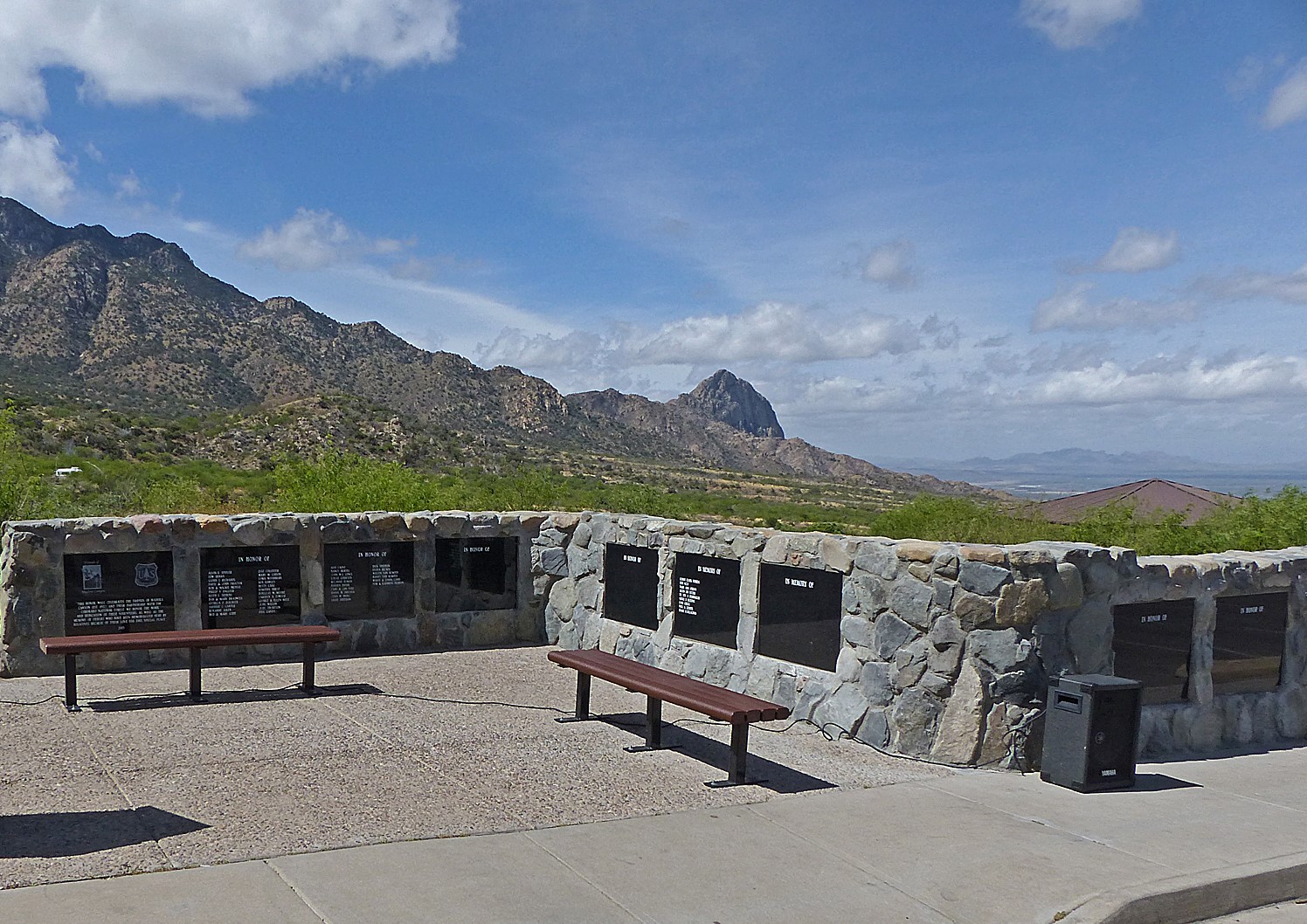
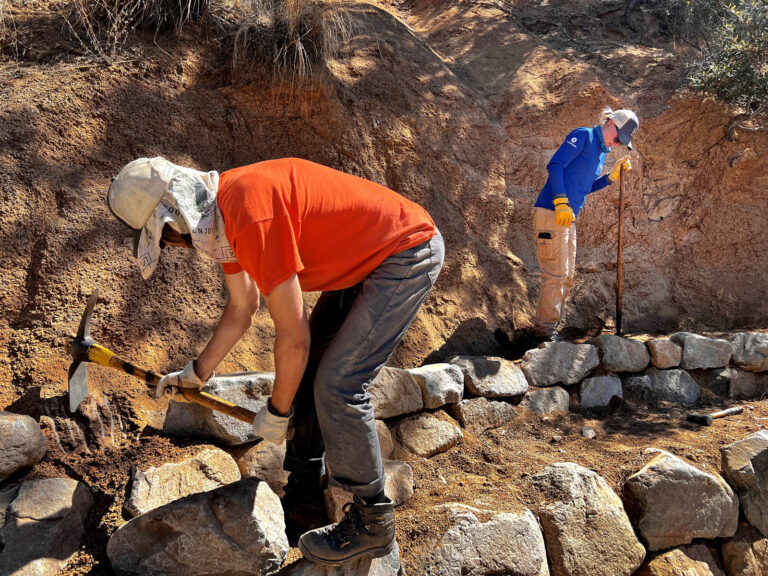
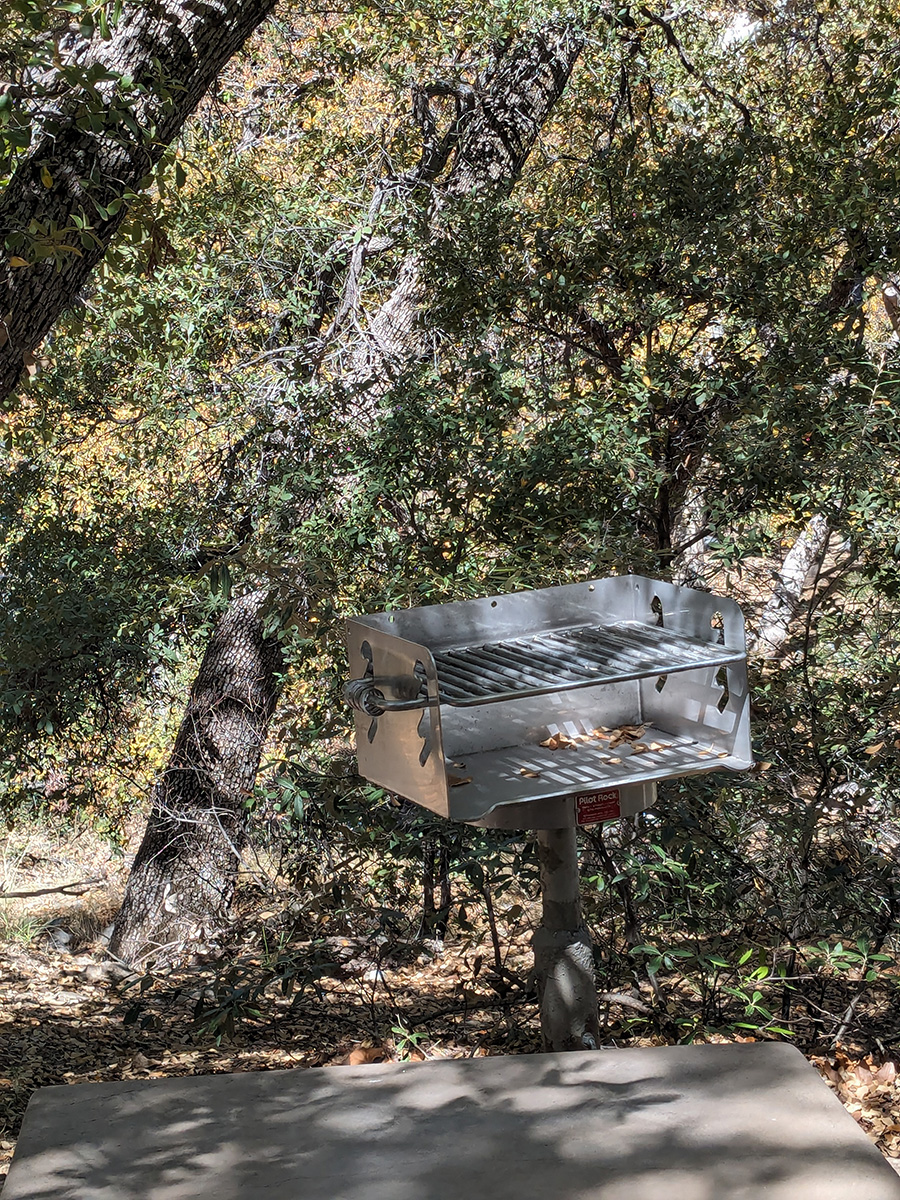
Today thanks to volunteers and the United States Forest Service we are working hard to keep the canyon clean and trails groomed for your enjoyment. There are many ways you can help us with this work.
